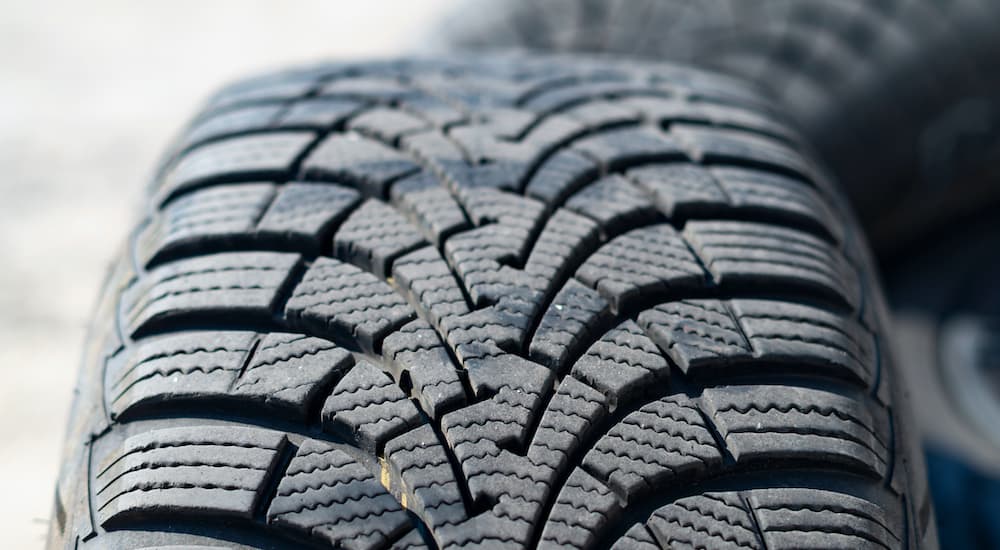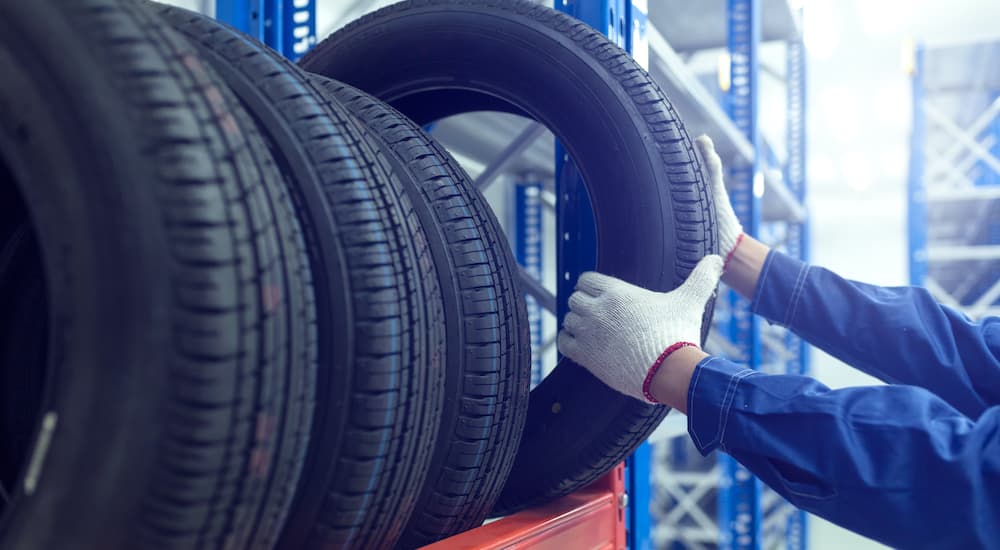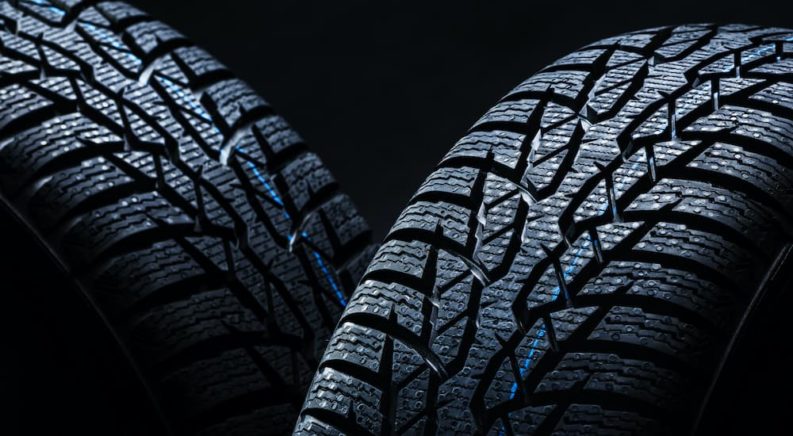Putting the right set of tires on your vehicle can make all the difference. There are all-terrain tires for off-roading, high-performance tires for sports cars, and snow tires for winter. However, there are also some special types of tires that are designed specifically to improve gas mileage on the road! These low rolling resistance tires have special tread designs and rubber compounds formulated to save you money at the pump. With the high price of gas today, let’s go through the different types of tires to see which ones will cut your gas bill and which ones will leave you spending more than necessary to keep your tank full.
How Do Tires Affect Gas Mileage?
It is pretty common knowledge that proper tire inflation can have a big impact on gas mileage. In fact, the EPA has estimated that your fuel economy will be 0.2% worse for every 1 psi below the recommended level. The reason for this is how the tire interacts with the road. As experienced off-roaders know, lower tire pressure allows the tire tread to flex more and better grip the road surface. The lower the tire pressure, the more tread contacts the ground, increasing resistance as the tire rolls along the road.
However, tire pressure is far from the only factor affecting rolling resistance. In general, the grippier the tire, the higher the rolling resistance, but tires with very aggressive tread patterns can also increase rolling resistance. This is not because the tread grips the road better––the grooves in tread actually reduce the amount of tire contacting the road––but because the tread deforms as you drive, wasting energy. Together, these factors mean that the ideal tire, from a fuel-saving perspective, has a relatively low grip and includes minimal tread.
Of course, this means that there are tradeoffs being made between performance and fuel economy. By its very nature, a low rolling resistance tire is not going to be well-suited to high-speed driving or off-road adventures. Indeed, manufacturers must compromise fuel savings to some extent just to keep the tires safe for use on the road––completely eliminating tread would make the tires dangerous to use on wet roads, while eliminating grip would leave you unable to accelerate, brake, or turn. However, there are plenty of tire options that maximize fuel savings while remaining safe to drive.

The Best Fuel-Saving Tires
While many tire manufacturers make attempts to reduce rolling resistance in some of their all-season tire options, a few tires stand out for being designed to maximize fuel savings on the road. Many low rolling resistance tires were originally designed for hybrids and electric vehicles, but if you can find them in the right size for your vehicle, there is nothing stopping you from switching to them.
- Bridgestone Ecopia
- Goodyear Assurance Fuel Max
- Michelin Energy Saver
All three of these fuel-efficient tire options are produced by some of the top tire manufacturers in the market, and they are available in a number of different sizes. However, there are other low rolling-resistance tires available from a variety of other manufacturers, so you don’t need to feel constrained to only go with these three options.
Even if you don’t opt for a true low rolling resistance tire or simply can’t find one in the right size for your car, a basic summer touring tire can get you pretty close. Summer tires tend to have less tread than all-season tires, and touring tires don’t have the same levels of grip as high-performance tires. They will still be a couple percent less efficient than a true low rolling resistance tire, but they will help you save a bit of money on gas.
The Worse Fuel-Saving Tires
There are countless tire options out there, and listing them all would take forever, but there are some types of tires you should avoid if you are looking to maximize your fuel economy. All of these are tires that inherently have high rolling resistance because they come with aggressive tread patterns or designs that maximize grip.
- Mud-Terrain Tires
- All-Terrain Tires
- Snow Tires
- High-Performance Tires
Mud-terrain tires and all-terrain tires are among the worse offenders when it comes to bad fuel economy, so if you aren’t planning on taking your truck or SUV off-road, save yourself some money and find something with less rolling resistance. Of course, if you do need to go off-road, opting for low-rolling-resistance tires is a surefire way to find yourself stuck, so don’t change your tires if you need that tread. The same holds true for snow tires––if you’re in an area that gets heavy snowfall, keeping your fuel-saving tires on during the winter is an unnecessary risk.
High-performance tires aren’t as bad for fuel economy as mud-terrain, all-terrain, and snow tires. They are also generally only found on sports cars, and you probably don’t want to handicap your high horsepower car by giving it insufficient tires. But if you were considering putting high-performance tires on your commuter car for some reason, you might want to rethink it and at least stick with some all-seasons.

Other Factors To Consider
Finding a low rolling resistance tire is a good way to reduce your fuel consumption, but you can go even further by changing the tire size on your car. Narrower tires offer less rolling resistance than wider tires, so consider looking for a narrower tire than your car came with from the factory. A lot of cars actually come with much smaller tires in their base trims, so it might be possible to stay with a factory size while still going narrower than what your car came with.
The same is true of wheel size. Big 20-inch and larger wheels might look good, but big wheels are heavy and require a lot of extra energy to get moving. Downsizing to a smaller wheel can dramatically reduce weight and make your vehicle far more efficient. This is particularly obvious with electric cars as they are very sensitive to changes in efficiency. For instance, the 2022 Tesla Model S Plaid is rated for a range of 396 miles when equipped with 19-inch wheels but only 348 miles with 21-inch wheels.
However, you don’t necessarily need to downsize. Factory wheels tend to be on the heavy side, so switching to a good set of lightweight aftermarket wheels can make your car more efficient without losing any aesthetics. In fact, your can will probably look even better with the wheels of your choice! Of course, going for a set of smaller and lighter wheels gives you the best of both worlds and will maximize your fuel savings when paired with some low rolling resistance tires.
Run the Numbers Before You Buy
While you won’t see huge fuel savings by switching to low rolling resistance tires, the difference is noticeable and can be up to 10%. Given that the average driver can spend over $1,000 on fuel in a year, the final savings are not insignificant. However, tires are also expensive. Buying a new set of more efficient tires to replace perfectly good tires will not usually save you enough money on gas to pay for the cost of the tires. Generally, the best time to switch to more efficient tires is when your old tires have reached the end of your life. But if you need new tires anyway, there is no reason not to switch to something with lower rolling resistance to help stave off high gas prices.

